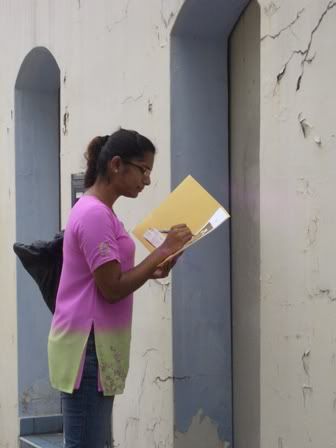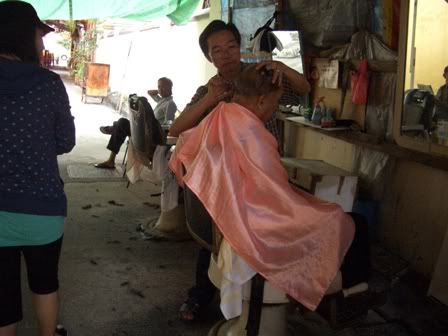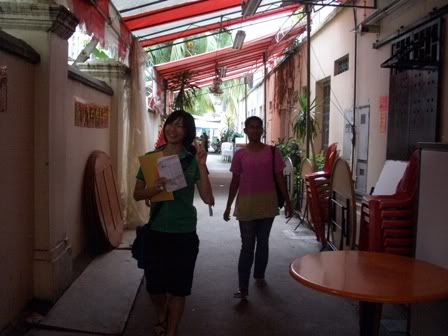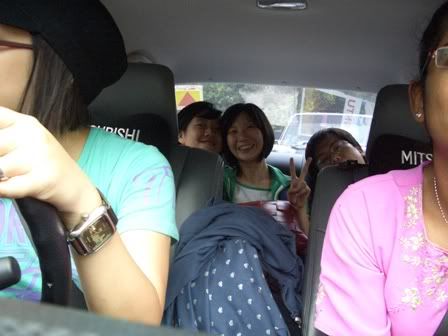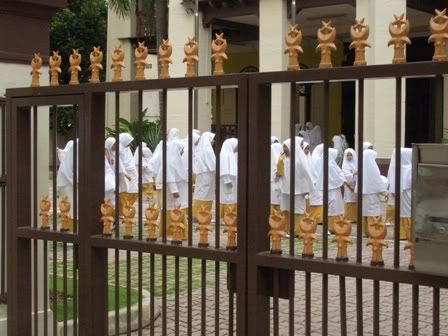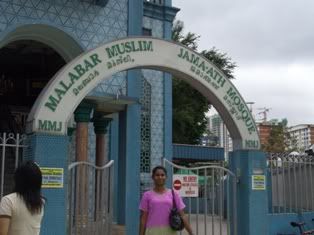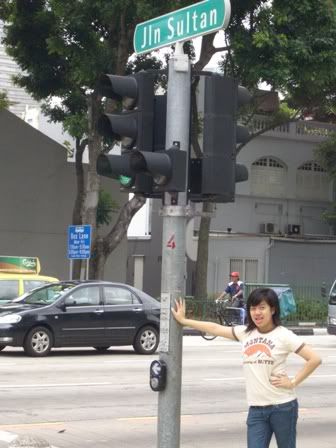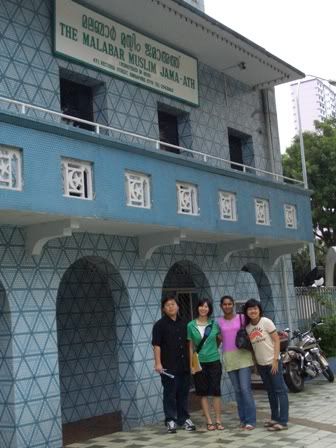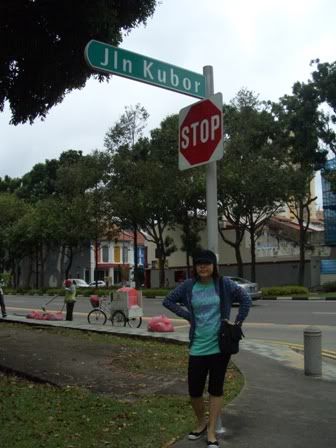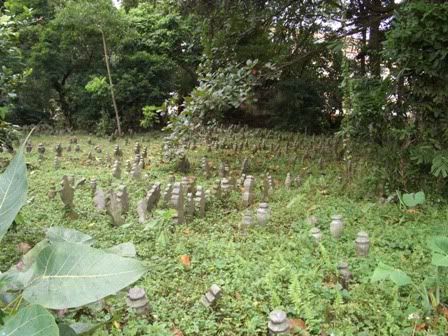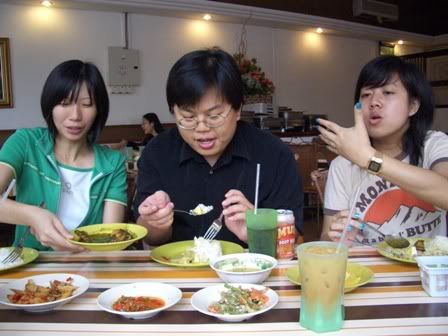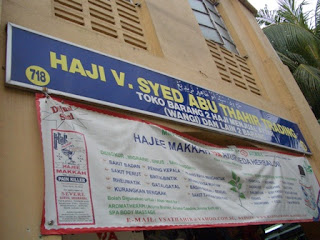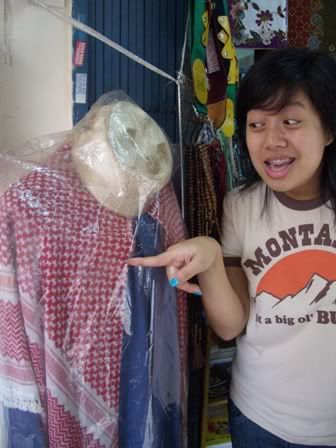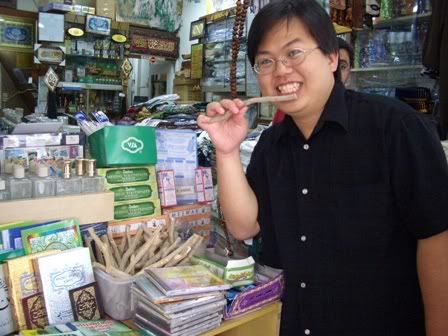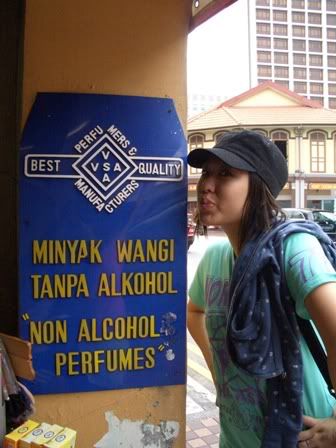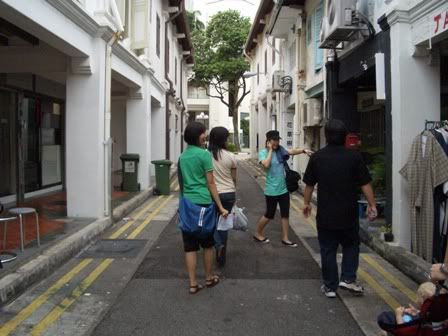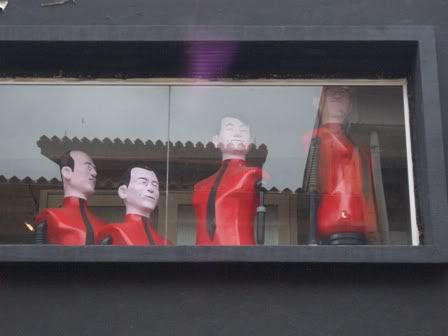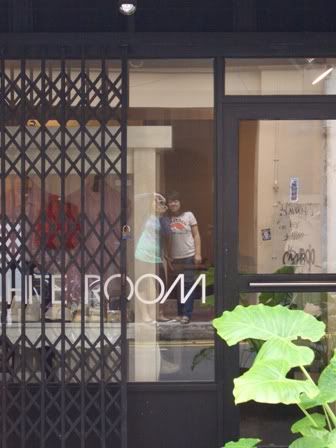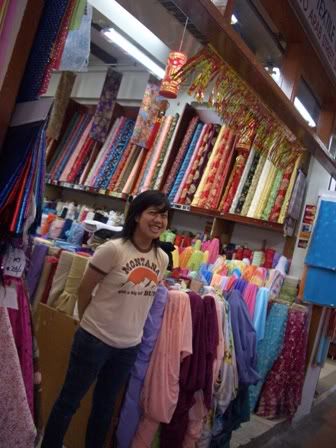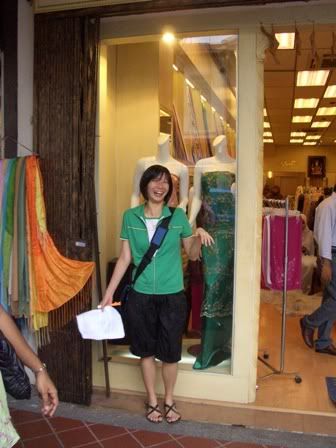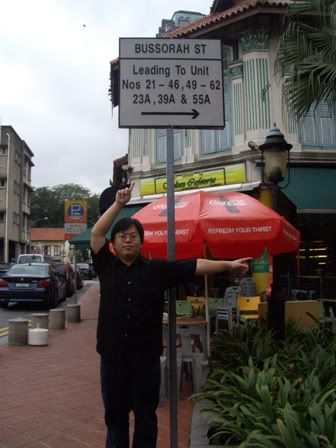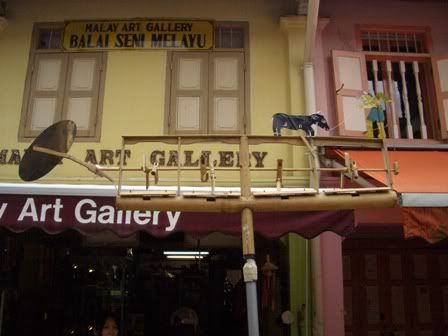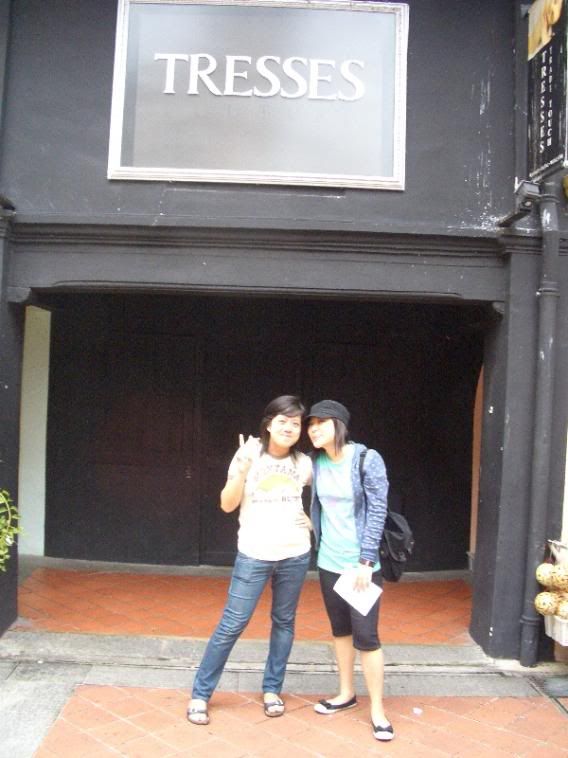...except the primary school kid wouldn't be required to post on a blog after completing the trail.
I'm just kidding, of course. :p (no, no, don't murder me)
I blame the kids we saw along the trail. Poor fellows in their school uniforms walking two by two obediently on the pavement, hand in hand. Coupled with the teachers screaming at the top of their lungs, the scene reminded me too much of my trip here as a primary (or was it secondary?) school student. That is how this reflection will be written I suppose; Kampong Glam in the eyes of a primary school student vs Kampong Glam from the perspective of a whiny NIE student.
So what did I learn this time around Kampong Glam? Lots, apparently. 1st thingie learnt: don't expect your primary/secondary students to know what's going on when you bring them around on a heritage trail. Or at least, don't expect them to remember much more than a decade later.
The next difference between this trip and the last (well, yeah, I don't visit this area much :( ) is the research that we have to do before the trip. All the primary school student has to do is to get a consent form signed. After that, he is ferried to the area from the school, led around the place by a teacher and brought back to school after enjoying the sights. Poor NIE student has to read up before visiting the place and figure out where exactly to head to.
The pre-visit research answered several questions I had about the area, the first of which being the grant paid to desendants of the Sultan. Are they still being paid today? A Straits Times report in 2004 seems to suggest so. The 79 descendants of Sultan Hussein Shah are being paid $350,000 per year (up from $29,200/year before) over 30 years from 1999.
Other questions such as why Kampong Glam was so named and the difference and relations between the Malays and the Arabs during 1820s were also answered during the pre-visit research. More questions were also raised during the journey itself, questions which probably would not occur to a primary school student. But let's deal with that later.
The trip itself started excellently - I was only 5 minutes late. The perplexing question of where to begin the trail was answered by looking for the place with available parking. The Malay Heritage Centre provided very helpful signposts and information boards that had the answers to our questions. "Hah! Dr Lim must have lifted the questions from these information boards. Hopefully, the rest of the trail will be as straightforward." Primary school students would probably have to copy answers from these boards to answer their worksheets.
Primary school students, however, would probably just walk past the restaurant at 73 Sultan Gate without batting an eyelid. As they continue, they would go past the fenced grasspatch that was Pondok Java and probably ignore the burnt shophouse that used to house one of the oldest blacksmith shop in Singapore. So would I actually, had we not been made to look for them. Shazleen had known the location of Pondok Java, thankfully. Lee Loy Hin blacksmith shop took abit of looking for as the map marked its location wrongly. We went around the block a couple of times and even asked the innocent coffeeshop helpers (such poor things, set upon by history students) for help. Luckily, an old man in the Sultan Arts Centre speculated that the blacksmith shop might be the burnt shophouse at the junction.
That is quite worrying, to be honest. What would happen to our history when people who have been through it are no longer around? We were rather close to giving up on the question just before we found the old man. Even more worrying is the earlier point about students walking past our heritage. Exactly what is the value of history to the common man? So what if Pondok Java has been demolished and Lee Loy Hin blacksmith shop burned down and relocated?
I did feel glad to find out about these things although I'm not sure why. Is it because I'm a history student? Maybe it's because I get to answer Dr Lim's questions and complete the assignment. Perhaps it's because I just like knowing things no one else knows or cares about. Or is it because I'm Singaporean and this is part of my heritage? I really hope it's because of the last reason (but I suspect it's the third). How then can the common man or the primary school students be inspired to a) care about our heritage and b) accept that this is an important part of our heritage?
Setting the questions aside for the moment, our trail continued with a walk down several streets while pondering their significance. None of us had any clue why a city in Afganistan would be named as a street in Singapore and the street itself yielded no clue. Along Arab Street, I had a sudden thought. Seeing how the Arab community is being representated in present day Singapore, do Singaporeans see much difference between the Arab community and Malay community? They are obviously different but there seems to be significant overlap within the Singapore context.
Between the streets, we also visited Sultan Mosque. I cannot imagine what would happen if they allowed 40 loud, mischievous kids into the place. First, you would have 40 pairs of white shoes outside the venue. Then, you would probably have kids wandering into the main prayer hall and getting shoo-ed out, like a caucasian couple we saw. I had set out wanting to see the irregularity in road design that had to be made in order to accomodate the mosque within town planning. No luck.
After lunch, we went cemetries hunting. See, if we were primary school students, we would be "visiting" cemetries. However, since we are NIE students and supposed to be able to read maps, we had to "hunt" for the cemetries. We had doubts about Kubor Muslim Cemetry as there were 2 cemetries along Jln Kubor. The one that fit the map was really run-down. Considering it was supposed to be the Tombs of the Malayan Princes, it was quite shocking to find it in such a state. I wondered about the ownership of that piece of land. If it's owned by the government, it would be a shame to leave it in such a state. Makes one wonder when exactly should a government intervene in preserving heritage. Only when it is useful as a tourist attraction? For shame.
Our next stop, the Malabar Muslim Mosque, is yet another destination that is easily glossed over by the primary school students. Afterall, mosques are aplenty in Singapore. That there are different groups of muslims and muslims with different origins would probably be lost on them.
I wonder if there were special relations or links between this community and the royalty back in 1820s. Why was the great grand-daughter of Sultan Hussein buried in the cemetry of this mosque? Brief online research gave no answer. Time to hit the libraries....feh
All in all, the trail was an eye-opener. Finding the answers to the questions gave me a warm fuzzy feeling within but also raised more questions to be answered. Going back to the question of getting students and the common man to be interested in our heritage to accept these small pieces of history as important parts of our heritage, I have to confess I don't have a clear idea on how to do so. However, I do think that letting the average joe see the relevance of individual pieces of history is important. Given that even cynical me can see how Kampong Glam played a part in Singapore's heritage (as compared to me totally not getting the relevance of pre-1819 history), I think there might be hope yet.
I think I've written too much...bleah

 Costume shop!
Costume shop!







